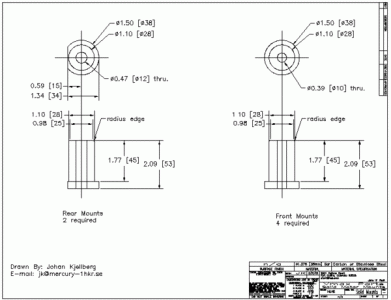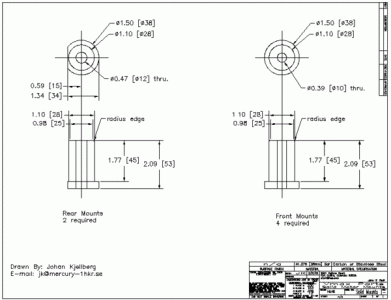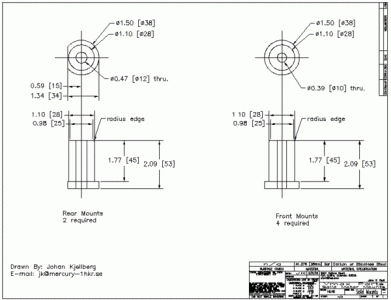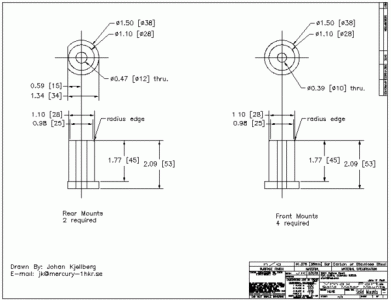Thanks GW, you've saved me having to draw what I need for my VMax... I have frame stiffener bars already, they're worth having too

The fact you've got a taper (assuming it's a smooth taper, not lumps and bumps) to me says it has to be related to Z movement, and there are only a few things possible, assuming that the bed's not grossly worn: 1) the headstock's out of alignment with the bed (not the first check though!); 2) the bed's twisted, probably the most likely on a light and flexible machine - have you checked for twist, either with a machinist's level (NOT a carpenter's level!) or by making a test bar ("Rollie's Dad's method" I think it's called)?; or 3) it's flex in the material (not that likely with only 3 diameters' stick-out).
Presume all gibs, toolpost / topslide bolts etc. have been checked:
My first check would be for bed twist, if you can beg or borrow a good machinist's level place it on the carriage and observe the bubble for the full length of the bed, ideally it shouldn't move AT ALL. If it does, shim the "low" corner until it's level[1] and bolt back down, go away, have a meal, have a beer, have a night's sleep, come back and check whether it's moved, correct as needed! All lathes' especially lighter, flexible ones, bend under their own weight and need correct support to stay straight and level, take time to "return to zero" - cast iron, steel, bronze and rubber have that in common.
If you can't get a good enough level (I use my granddad's WW1 Vickers-gun clinometer, good to a few seconds of arc), try the "Rollie's Dad's method" - it's all over Google

To check headstock and tailstock alignment with the ways turn a large diameter (ideally hollow) foot-long shaft with 2 larger collars at the ends, between centres[2],
take really fine finish cuts without moving cross or topslide, mike the collars to be sure they're the same, if they are your tailstock's aligned, next chuck one end (NO tailstock support) and indicate in so it's running coaxial and centred
at both ends[3], move the indicator to the carriage and compare readings by moving the carriage from collar to collar - if the same reading your headstock's aligned with the ways.
Actual chuck runout (measurable at the jaws) doesn't really factor into tapers, the tool will always cut a cone or cylinder around the spindle axis, up until the runout's so bad it skips some of the work circumference...
If the bed's grossly worn, all bets are off and no simple adjustments will cure it, you'll have to learn to live with the (actually quite small) taper

{Columbo} Just One More Thing - you are cutting the diameter with the carriage, not the topslide, which could be out-of-parallel with the ways...? {!Columbo}
Just my ha'pennorth,
Dave H. (the other one)
[1] level as in the same plane both ends, actual level doesn't matter as long as the ways run parallel!
[2] how do I run a hollow shaft between centres?!?! Loctite in a plug at each end!
[3] a rubber mallet on the free end can help here





